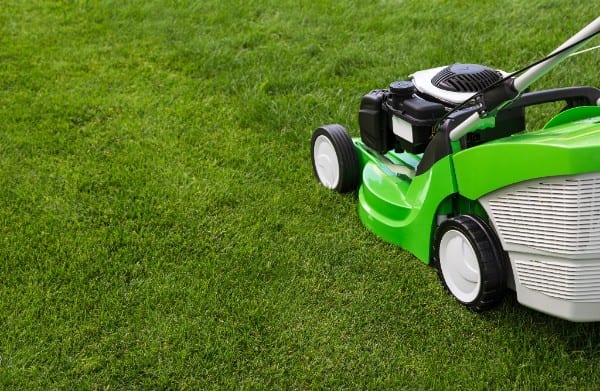As the weather warms up and spring starts to set in, everyone is ready to be outside. Even those most passionate about landscaping and garden care can be tempted to shirk their property related duties in the winter without the joyful warmth of the sun and the fun of planting to motivate them. As the weather continues to brighten, you will want to make sure your lawn and property are ready to look their best for your next dinner or garden party.
It is important to get your lawn back up and running as early as possible. The cold, harsh, and often unpredictable winter weather can do a number on your lawn, leaving it damaged and parched for nutrients and sunlight. Mulching will do wonders for the look and health of your lawn. We all know that a malnutritioned, over dry, or uncared for lawn will not be beautiful and green, while a well cared for lawn is an asset to any property. Mulching not only saves your lawn, but also saves time and money.
If you have neglected grass cutting over the winter, its time to get back into the habit. Keep these grass cutting tips in mind in order to get your lawn back in tip top shape for summer. Whether you’re a seasoned lawn care expert or a newbie just starting to learn the ropes of lawn care, it is important to keep the following points in mind.
Mowing your grass at the highest setting will produce a far healthier lawn. Also, if your lawn is looking slightly scraggly and suffering from the winter blues, it is very important not to over-cut your grass. Stick to the 1/3 rule if possible and never remove more than 1/3 of the grass blade length at a time. While a healthy lawn can take the occasional close-cut, constantly cutting grass too short can create a brown damaged lawn that is susceptible to pests. Different types of grass also have different ideal lengths, so find out which sort of grass you have before cutting it.
While proper mowing increases the density and health of the lawn and decreases weeds, overdoing it has harmful side effects. These include: injury to the crown of the grass which hinders growth and nutrient storage, makes individual blades of grass unable to produce food through photosynthesis, an increase in weed growth, and a heightened risk of soil compaction.
However, you can also keep your lawn healthy by mulching, only mowing it when it is dry, keeping your lawn mower blades sharp, changing your mowing pattern regularly, following the proper fertilizing schedule for your type of grass, and mowing the grass higher in shaded areas. Also, if you have cool season grasses, they require less mowing in dry, hot weather.
For more lawn care tips and tricks, or to schedule expert care for your lawn, contact JFC today.
